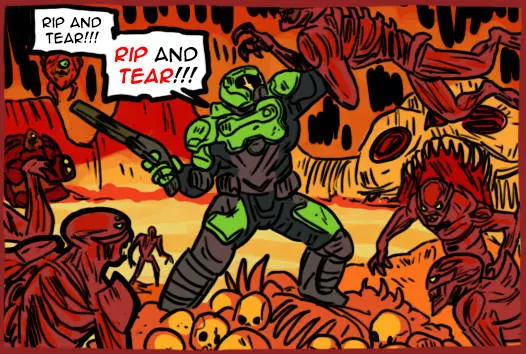Design systems have a tendency to get out of hand if you don't pay close attention.
Ever wanted to know how many similarly-named elements you have in your repo?
We need to find all tag name instances which start with rh-navigation-, and end
with at least two dash-separated words. Why two? Because we already know that we
want to have <rh-navigation-primary>, <rh-navigation-secondary>, etc -
that's the whole feature, but we don't necessarily want to have similar-sounding,
nearly-identical child elements like <rh-navigation-primary-item> and
<rh-navigation-secondary-item>. As the wisest of men once said
There is a time and a season for everything under the sun A time to copy, A time to abstract A time to test, A time to do static analysis
etc.
Ripgrep to the rescue! Here's the one-liner I used:
rg -Ior '$1' "<(rh-navigation(-\w+){2,})( .*)?>" | sort | uniqBreakdown:
rg- the ripgrep command. Rips and tears, until it's done-I- the--no-filenameflag prevents ripgrep from printing file names, this is important because we don't care which filename is there, only which tag name is there-o- the--only-matchingflag only prints the matching parts of the line, this is important for the same reason as above-r '$1'- the--replaceflag replaces the match ripgrep finds with the regexp expression provided, namely the (shell-escaped with') first capture group, which is from...<(rh-navigation-(\w+){2,})( .*)?>- the pattern we're searching for. In my case, I'm looking for auxiliary elements that have to do with (but aren't equivalent) to our<rh-navigation-*>suite of elements.- the first capture group is
rh-navigation-(\w+){2,}, which means that the tag name- must begin with
rh-navigation- - must then be followed by a dash, followed by one or more alpha numeric character (
\wfor word chars,+meaning one-or-more) - that "-word" pattern must repeat two-or-more times. e.g.
rh-navigation-primary-itemwill match, butrh-navigation-primarywon't
- must begin with
( .*)?optional attributes on the element, preceeding the closing>
- the first capture group is
| sort- we pipe those results (tag names, no attributes, at least 4 words each) into the sort command, which is a necessary step before ...| uniq- we pipe the sorted results into theuniqcommand which returns (by default) a list of unique entries
And thus, we've discovered all the tag names in our repo which are auxiliary elements to the rh-navigation suite of elements.
Cover image CC BY-NC-SA theeysmaster
